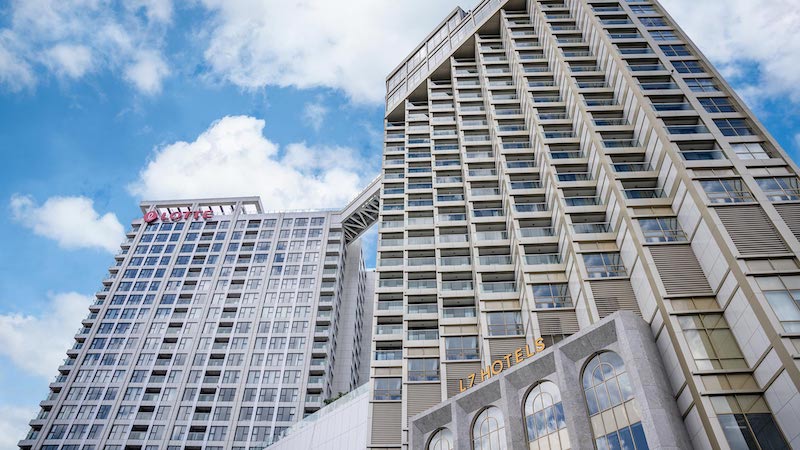The positive recovery in the tourism sector has led to a shift in the hospitality property market towards four and five-star hotels.
Savills forecasts that the five-star hotel segment will account for 76% of future supply in Hanoi, with the four-star segment making up the remainder. Most of the new projects are located in the city center.

L7 West Lake Hanoi, a five-star project invested by Lotte.
"There are no plans to open any more three-star hotels in the next three years," said Matthew Powell, Director of Savills Ha Noi.
Furthermore, the closure of low-quality supply has contributed to the repositioning of Ha Noi's hotel market, explaining the significant decline in the three-star hotel segment, he added.
According to Savills' research, Ha Noi's total hotel supply at the start of 2024 was approximately 11,120 rooms from 67 projects, a 1% decrease from the previous quarter. However, the city has added two new four-star hotels and a further four new five-star hotels, resulting in an 8% increase in supply compared to the same period last year.
Last year, Ha Noi welcomed the reopening of several five-star hotels such as Movenpick, and upcoming openings include Hilton and Fusion. Other notable five-star projects include Lotte's L7 West Lake Ha Noi, Dusit Tu Hoa Palace, The Ritz Carlton, Four Seasons, Waldorf Astoria Ha Noi and Fairmont.
He added that the recovery in tourism has helped boost the hotel market. From the beginning of the year to date, Ha Noi, one of the major tourist cities, has received 6.5 million visitors, up 11% year-on-year. Of these, international arrivals reached 1.4 million, an increase of 40%, while domestic visitors totalled 5.1 million, an upturn of 5%.
The increase in tourist arrivals has created significant opportunities for the hotel industry, especially as the numbers are still only at 87% of what they were in 2019, before the pandemic, indicating the potential for further development.
Matthew Powell says the tourism industry is showing signs of picking up. Hotel room occupancy in markets such as Ha Noi and Ho Chi Minh City reached 65% in the first quarter of this year, up 1% on a quarterly basis and 7% year-on-year.
Chinese arrivals are still considered to be below pre-pandemic levels. However, inbound tourism is more diverse in terms of nationalities, with visitors from Japan, Malaysia, Australia, Thailand, Cambodia and the US.
The growth in Indian arrivals has been particularly spectacular. Flights from major Indian cities to Vietnam have increased significantly and there are plans to introduce more direct flights to meet the growing demand from Indian tourists.
Vietnam's unique advantages are drawing the interest of luxury hotel chains, thereby expanding opportunities for the recovery and growth potential of the tourism and resort real estate sector.
Thanh Thanh